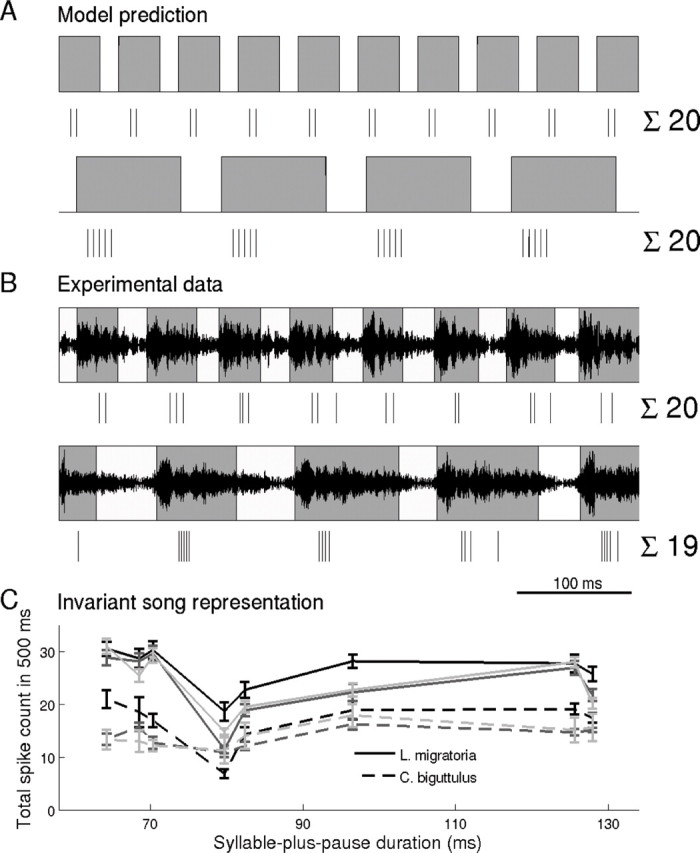Figure 3.

Total spike count is invariant to temporal stimulus rescaling. A, Sketch of two simple auditory sound signals. The lower stimulus is obtained by stretching the upper stimulus by a factor of 2.5. Assuming that the IBSC scales linearly with the preceding pause duration, this rescaling results in 4 instead of 10 bursts, but each burst has now 5 instead of only 2 spikes. Both effects compensate each other so that the total spike count stays constant. B, Measured AN12 responses to two conspecific grasshopper songs. Although the songs differ strongly in their pause durations, the total spike count is approximately equal because the syllable-to-pause ratios of both songs are approximately the same (1.41 for the upper and 1.40 for lower song, respectively), in agreement with the model prediction. C, Total spike count (window length, 500 ms) of responses to the eight tested songs, as a function of the duration of one syllable plus one pause. The duration of this basic song element differs for each song, resulting in the eight different values on the abscissa. Each of the six curves represents data from one neuron, with the species indicated by line type. Error bars indicate upper and lower quartiles of total spike count across eight repetitions. The total spike count varies from cell to cell but without overall correlation to the syllable-plus-pause duration (R2 = 0.00 ± 0.14). Downstream neurons thus have access to the behaviorally relevant syllable-to-pause ratio in a timescale-invariant manner.
